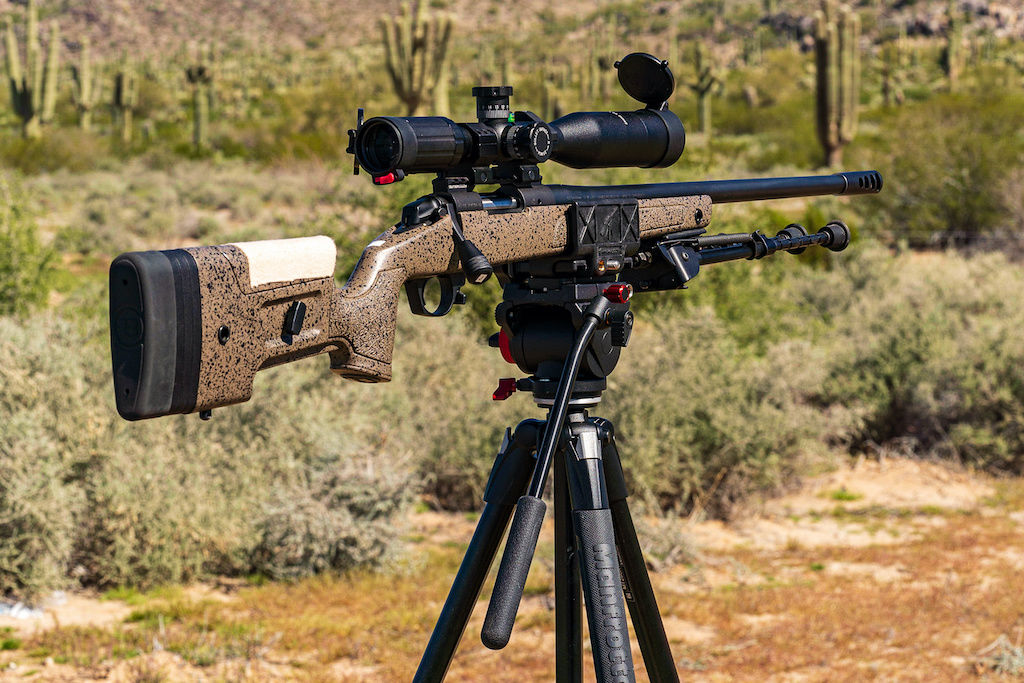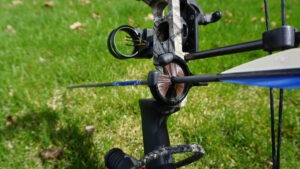Salmon fishing in Maine is a thrilling and rewarding experience for anglers of all skill levels. With its picturesque landscapes and abundance of pristine rivers, Maine offers some of the best salmon fishing opportunities in the United States. In this article, we will explore the various aspects that make Maine a top destination for salmon fishing enthusiasts. From understanding the salmon fishing season to discovering the top locations and essential gear, we will cover everything you need to know for a successful fishing trip in Maine.
Understanding the Salmon Fishing Season in Maine
The salmon fishing season in Maine is influenced by several key factors. Understanding these factors can help you plan your fishing trip for maximum success.
Maine is renowned for its abundant salmon population, attracting anglers from all over the world. The state’s pristine rivers and lakes provide the perfect habitat for these magnificent fish to thrive. However, the salmon season is not a static event; it is a dynamic process influenced by various factors that govern the behavior and availability of these prized fish.
Key Factors Influencing the Salmon Season
The salmon season in Maine is primarily influenced by the fish’s natural life cycle. Salmon return to the rivers where they were born to spawn, and this migration occurs during specific times of the year. This incredible journey takes the salmon from the vastness of the ocean back to the freshwater rivers, where they face numerous challenges and obstacles along the way.
One of the critical factors affecting the salmon season is the water temperature. As the temperature rises, it triggers the migration instincts of the salmon, prompting them to begin their arduous journey upstream. The timing of this migration is crucial, as it determines when the salmon will be present in the rivers and available for anglers to catch.
Another factor that plays a significant role in the salmon season is the availability of food sources. Salmon are voracious eaters, and their feeding patterns are closely tied to the abundance of prey in the rivers. Factors such as water clarity, insect hatches, and the presence of baitfish all contribute to the availability of food for the salmon. Understanding these feeding patterns can give anglers an advantage in targeting the areas where salmon are likely to congregate.
Water conditions also have a significant impact on the salmon season. Heavy rainfall can cause rivers to swell and become turbid, making it difficult for salmon to navigate their way upstream. Conversely, a lack of rainfall can result in low water levels, making it challenging for salmon to reach their spawning grounds. Monitoring water levels and conditions can help anglers determine the best times to fish during the season.
Timing Your Fishing Trip for Maximum Success
To increase your chances of a successful salmon fishing trip, it’s important to time your visit correctly. The peak salmon fishing season in Maine typically runs from May to October, with different rivers having slightly different timing. Early season fishing can be productive, as the fish are actively feeding after a long winter. The rivers come alive with the sight of salmon leaping out of the water to catch insects and small fish.
As the season progresses, the salmon become more focused on their spawning instincts. Late season fishing can also be fruitful as salmon prepare to spawn before winter sets in. During this time, the fish are often more aggressive and willing to strike at a well-presented fly or lure. Anglers who are patient and persistent can be rewarded with the thrill of hooking into a large, powerful salmon.
It’s worth noting that the salmon fishing season in Maine is strictly regulated to ensure the sustainability of the fishery. Catch-and-release practices are encouraged, and there are specific regulations regarding size limits and bag limits. Anglers should familiarize themselves with these regulations and adhere to them to protect the salmon population for future generations.
Planning a salmon fishing trip in Maine is an exciting endeavor. By understanding the key factors that influence the salmon season and timing your visit accordingly, you can increase your chances of a memorable and successful fishing experience. Whether you are a seasoned angler or a novice, the thrill of hooking into a powerful salmon in the pristine rivers of Maine is an experience that will stay with you for a lifetime.
Top Salmon Fishing Locations in Maine
Maine is home to numerous fishing spots where you can target salmon. These locations vary in terms of coastal and inland spots, as well as their accessibility and amenities.
Salmon fishing in Maine is a popular activity for both locals and tourists alike. With its diverse range of fishing spots, anglers have plenty of options to choose from. Whether you prefer coastal or inland fishing, Maine has it all.
Coastal vs Inland Fishing Spots
Coastal fishing spots in Maine offer the opportunity to catch both Atlantic salmon and other popular game fish such as striped bass. Rivers like the Penobscot and Kennebec are known for their coastal salmon fishing. These rivers not only provide excellent salmon fishing but also offer breathtaking views of the coastline. Imagine casting your line into the sparkling waters, surrounded by the rugged beauty of Maine’s rocky shores.
Inland fishing spots, on the other hand, provide a peaceful and secluded fishing experience. Rivers like the Aroostook and the Allagash offer excellent opportunities for anglers looking to escape the crowds and connect with nature. Picture yourself in the heart of Maine’s wilderness, surrounded by towering trees and the soothing sounds of nature. It’s a chance to immerse yourself in the serenity of the great outdoors while waiting for that perfect salmon to bite.
Accessibility and Amenities of Top Locations
The accessibility and amenities of fishing spots can vary significantly. Some rivers have easy access points and well-maintained fishing platforms, while others require more effort to reach. Places like the West Branch of the Penobscot River and the Androscoggin River offer a range of amenities, including campsites and boat rentals, making them popular choices for both experienced and novice anglers.
Imagine arriving at one of these top fishing locations and finding everything you need for a successful fishing trip. You can set up camp near the river, enjoying the convenience of nearby facilities while being surrounded by nature. If you don’t have your own boat, you can easily rent one and explore the river at your leisure. These amenities make fishing in Maine a hassle-free experience, allowing you to focus on what matters most – catching salmon.
Furthermore, the accessibility of these fishing spots allows anglers of all skill levels to enjoy the experience. Whether you’re a seasoned angler or a beginner, you can find a location that suits your needs. With well-maintained fishing platforms, even those with limited mobility can have a chance to cast their lines and reel in a prized salmon.
In conclusion, Maine offers a wide range of salmon fishing locations that cater to different preferences and needs. From the rugged beauty of the coastal rivers to the tranquility of the inland waters, there’s something for everyone. So pack your fishing gear, prepare for an adventure, and get ready to create lasting memories in Maine’s top salmon fishing spots.
Essential Gear for Salmon Fishing in Maine
Having the right gear is crucial for a successful salmon fishing trip in Maine. Here are some essential items to consider:
Choosing the Right Fishing Rod
When it comes to selecting a fishing rod, consider the weight and length that suits your fishing style and the size of salmon you’re targeting. Medium to medium-heavy spinning or casting rods measuring between 8 to 10 feet are popular choices for salmon fishing in Maine.
These longer rods provide better casting distance and control, allowing you to reach those elusive salmon hiding in the deeper parts of the river. The medium to medium-heavy action provides the necessary strength to handle the fight of a strong salmon, while still maintaining sensitivity to detect even the slightest nibble.
Additionally, it’s important to choose a rod with a comfortable grip and a reel seat that securely holds your reel in place. This will ensure that you have a firm and comfortable grip, reducing fatigue during long hours of fishing.
Bait and Lures: What Works Best?
Salmon in Maine are known to be selective eaters, so it’s important to have a variety of bait and lures at your disposal. While fresh salmon roe is a classic bait choice, lures such as spoons, spinners, and flies can also be effective.
When using fresh salmon roe as bait, it’s crucial to handle it with care to maintain its freshness and scent. Keeping it cool in a bait cooler or using a bait threader to securely attach it to your hook will increase its effectiveness. The natural scent and texture of fresh roe can be irresistible to salmon, enticing them to bite.
On the other hand, lures such as spoons, spinners, and flies offer a more versatile and dynamic approach to salmon fishing. The flash and vibration created by spinning spoons can trigger aggressive strikes from curious salmon. Meanwhile, the lifelike movement and presentation of flies can mimic natural prey, fooling even the most cautious salmon.
Experimenting with different colors and sizes will help you determine which bait or lure is most successful on any given day. Salmon can be influenced by various factors, such as water clarity, weather conditions, and even the time of day. By having a diverse selection of bait and lures, you can adapt to these changing conditions and increase your chances of a successful catch.
Regulations and Licenses for Salmon Fishing in Maine
It’s essential to familiarize yourself with Maine’s fishing laws and regulations before embarking on a salmon fishing trip.
Understanding Maine’s Fishing Laws
Maine has specific regulations regarding daily bag limits, size restrictions, and fishing methods for salmon. These regulations are in place to protect the salmon population and ensure sustainable fishing practices. Make sure to read through the Maine Department of Inland Fisheries and Wildlife’s guidelines to understand your responsibilities as an angler.
How to Obtain a Fishing License in Maine
Before casting your line, it is mandatory to obtain a fishing license in Maine. Licenses can be obtained online through the Maine Department of Inland Fisheries and Wildlife website or from authorized license vendors throughout the state. It’s important to carry your fishing license with you while fishing and to follow all applicable rules and regulations.
Tips and Techniques for Successful Salmon Fishing
Mastering certain techniques can significantly improve your chances of success when targeting salmon in Maine.
Mastering the Art of Casting
Efficient casting is essential for reaching productive fishing spots and presenting your bait or lure effectively. Practicing different casting techniques, such as overhead casting and roll casting, will increase your accuracy and distance, allowing you to cover more water and increase your chances of hooking a salmon.
Reading the Water for Salmon Habits
Understanding the behavior and habits of salmon can greatly enhance your fishing experience. Look for areas with fast-flowing water, as salmon prefer to hold in these spots to conserve energy. Focus on areas with structure, such as rocks and logs, as salmon frequently use these as underwater hiding spots.
In conclusion, Maine offers some of the best salmon fishing opportunities in the United States. By understanding the salmon fishing season, exploring top locations, having essential gear, adhering to regulations, and employing effective techniques, you can maximize your chances of a successful salmon fishing trip in Maine. Whether you are a novice angler or a seasoned pro, the thrill of reeling in a prized salmon against the backdrop of Maine’s breathtaking scenery is an experience that should not be missed. Start planning your next fishing adventure in Maine for an unforgettable salmon fishing experience!


